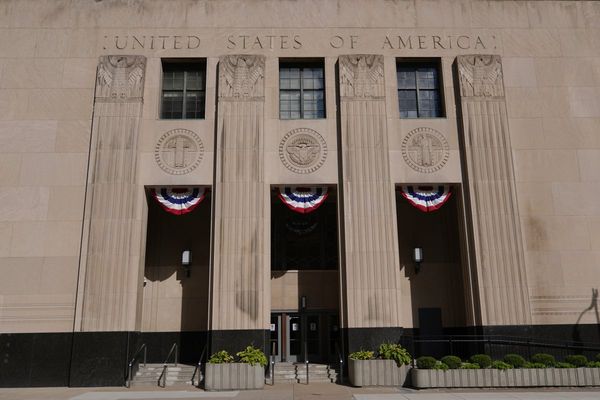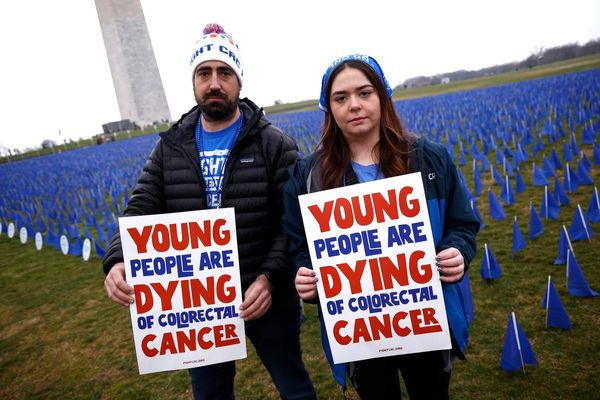Born in Crofton Park, south London, the son of a Lloyd's insurance man, Campbell was educated at St Dunstan's school, Lewisham, after which he was articled to the firm where his uncle was a partner, WA Pite, which had designed King's College Hospital, London. Meanwhile, he studied at the Regent Street Polytechnic, but, although he passed his RIBA finals in 193, he could not afford the institute entrance fee until 1933.
That year, too, he married Frances Almond, and joined the go-ahead architect's department of the Miners' Welfare Commission. By 1938, he was responsible for its west Midlands sector - and had joined the Communist party.
The following year, Campbell signed up for war service with the Royal Engineers, but, on the day he was to leave for Catterick, he was recalled to the Miners' Welfare Commission, where he spent part of the war designing the first pithead baths. During the Blitz, his group was seconded to the City of London, to design air-raid shelters, and assess the steel recoverable after bombing. In 1943 John Forshaw, formerly chief architect of the Miners' Welfare Commission, invited him to work for Sir Patrick Abercrombie on the County of London Plan.
The Communist party membership came back to haunt Campbell in the mid-1950s. He was shortlisted for the top job, as chief housing architect in the LCC's general division, but the chair of the finance committee had been alerted to his political affiliation, and opposed the candidature. An embargo was put on his promotion. There were those who regarded Ken's ubiquitous affability as a weakness, but no one ever disputed his democratic stance, nor his even-handed treatment of left and right.
Robert Matthew, the LCC chief architect - and a man famous for his coolness - emerged from that McCarthyish encounter with his face distorted with anger; Campbell went on as usual. Even-tually, his career resurfaced, and he became deputy, to succeed Whitfield Lewis as housing architect.
Campbell's strength was his ability to present a case. It helped that he was amusing, but what endeared him, both to councillors and to his 250-strong staff, was his open approach. He told them: "I am leaving you to get on with this, but if anything goes wrong, please tell me, as I carry the can."
He gently resisted pressure from politicians to use only prefabricated systems. The architects responsible to him knew that they should use whatever constructional system they considered economic for their project, and the delicate complex of factors they had to integrate.
When things did go wrong, however, Campbell went straight to the chairperson concerned, said what had happened, and suggested what could be done, with a price tag. He once arrived to present a scheme, and found the model ringed round by a table. He immediately crawled under it, whereupon the chairperson asked what he was doing. "Madam," he replied. "I am always on my knees in your presence."
A man so expert with committees was, of course, invited to serve on many. For 22 years he was a member of the RIBA council, and vice-president from 1975 to 1977. He was chair of the board of architectural education, and president of the Association of Building Technicians. He particularly enjoyed being a member of the faculty of the British School at Rome. He was also consultant to the Coin Street development at Waterloo.
Though the Communist party stigma evaporated, his political beliefs were designed to last. When offered a CBE, he was not tempted, but realised that the colleagues he represented must be informed, and arranged a lunch. He put it to them that "Frances would never allow this." He knew how to deliver a considered historical analysis in a manner that added sparkle to a gala dinner.
The Campbells retired to Dulwich, south London, where Ken had designed a house in the manner (simple) and the material (concrete) of his day. Sadly, they had to move when Frances became ill, to Norfolk. Campbell is survived by his three daughters.
· Kenneth John Campbell, architect, born September 26 1909; died July 6 2002
The following correction was printed in the Guardian's Corrections and Clarifications column, Friday July 12 2002
Kenneth Campbell was survived not only by three daughters as we said, but also his wife Frances.







